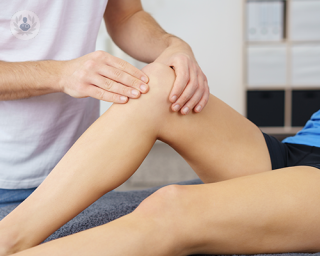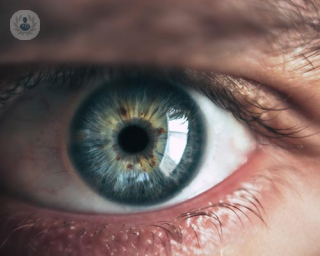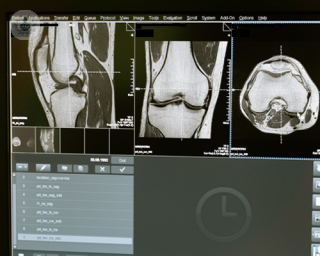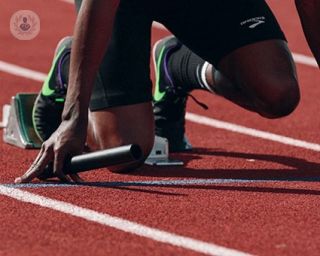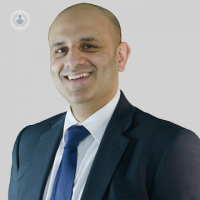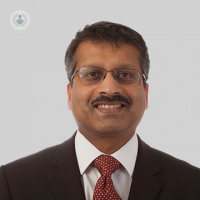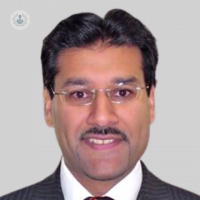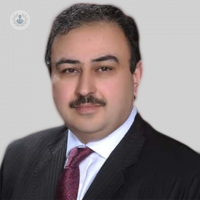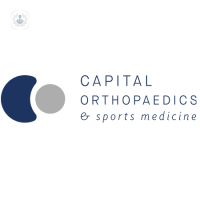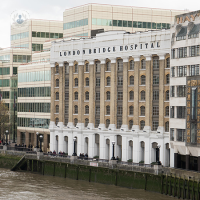Cartilage repair
Mr Christopher Rees - Orthopaedic surgery
Created on: 10-31-2018
Updated on: 06-06-2023
Edited by: Carlota Pano
What is cartilage repair?
Cartilage is the smooth, white tissue that covers the surface of joints. It reduces friction and acts as a shock absorber. Cartilage damage can occur as a result of a sudden injury, a sports injury or wear-and-tear (osteoarthritis).
Cartilage damage can affect the hips, ankles and elbows, but is most common in the knees (articular cartilage). Minor injuries can heal on their own, but severe cartilage damage will require surgery.
Cartilage repair is the repair, regeneration or replacement of damaged cartilage with surgical techniques if cartilage doesn’t heal on its own or with the use of physical therapy and medication.
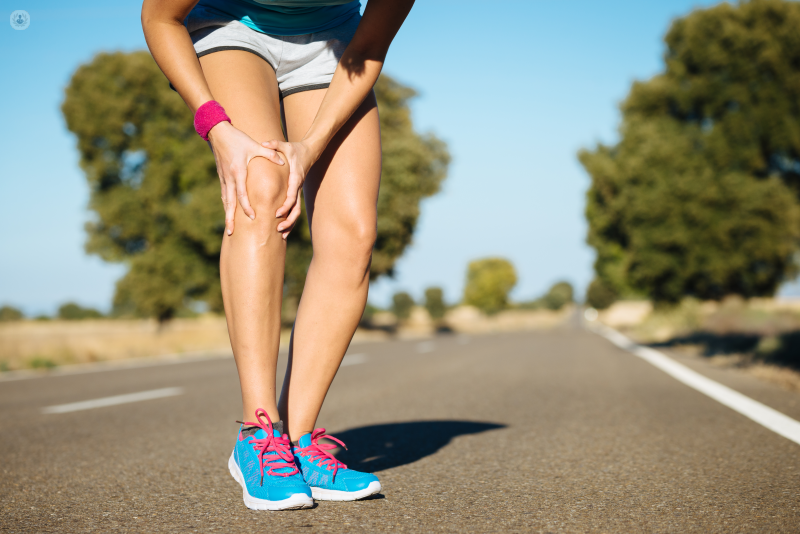
Why is cartilage repair carried out?
Cartilage repair is carried out to restore damaged cartilage around joints, relieve pain and stiffness, and restore joint function and mobility. It can also delay or prevent the onset of arthritis.
What does cartilage repair involve?
Before surgery is an option, some people heal well with rest, elevation of the damaged joint, physiotherapy and the use of NSAID’s. However, sometimes surgery is needed if the cartilage damage is too great. Most procedures to restore articular cartilage are done with arthroscopic surgery.
The most common surgical procedures to restore cartilage are:
Microfracture
Microfracture stimulates the growth of new cartilage and can be done with an arthroscope (an endoscope placed into the joint through a small incision). A sharp tool (awl) is used to make a number of holes in the bone under the cartilage, called the subchondral bone. This allows a new blood supply to reach the joint, bringing new cells that will form new cartilage.
Drilling
Drilling stimulates the growth of new cartilage by making small holes in the bone below the cartilage, using a surgical drill. This procedure can also be carried out with an arthroscope.
Abrasion Arthroplasty
This procedure can be done with an arthroscope and is similar to drilling. Burrs are used to make incisions into the bone, the damaged cartilage is removed and new cartilage is generated in the healing process.
Autologous Chondrocyte Implantation (ACI)
This procedure involves removing healthy cartilage tissue which contains healthy cartilage cells. These are then sent to a laboratory to be multiplied. This procedure is done with an arthroscope.
Open surgery or an arthrotomy is then carried out to implant the new cells into the damaged cartilage. ACI is used more for younger patients, and it can take a number of weeks.
Osteochondral Autograft Transplant
A graft of healthy cartilage tissue and bone is transferred from one part of the joint that doesn’t bear weight to the damaged part of the joint. This operation is good for small joint injuries and can be done with an arthroscope.
Osteochondral Allograft Transplant
This procedure requires a larger incision, and is used for bigger injuries. The allograft is a block of cartilage and bone and unlike the autograft transplant, the cartilage is taken from a donor, rather than the patient themselves.
Stem cells
Although the application of stem cells to stimulate the growth of new cells and cartilage is still under investigation, current research is focused on this. Mesenchymal stem cells, from living human tissue, when placed in a certain environment can generate new cells.
How can I prepare for cartilage repair?
Your doctor will decide on the best surgical procedure for you, based on your age, medical history and degree of cartilage damage. There is no preparation for cartilage repair procedures, apart from resting the damaged joint and offloading any unnecessary weight before a procedure.
What does post-operative care involve?
Post-surgery, if the surgery was done on the knee, you may have to use crutches to offload any extra weight from the joint to allow it to heal.
Physical therapy may be advised to reduce stiffness and increase mobility. Sometimes, continuous passive motion therapy is used.
Recovery from an arthroscopy is much quicker and less painful than open surgery. It is normal for a full recovery to take several months.

